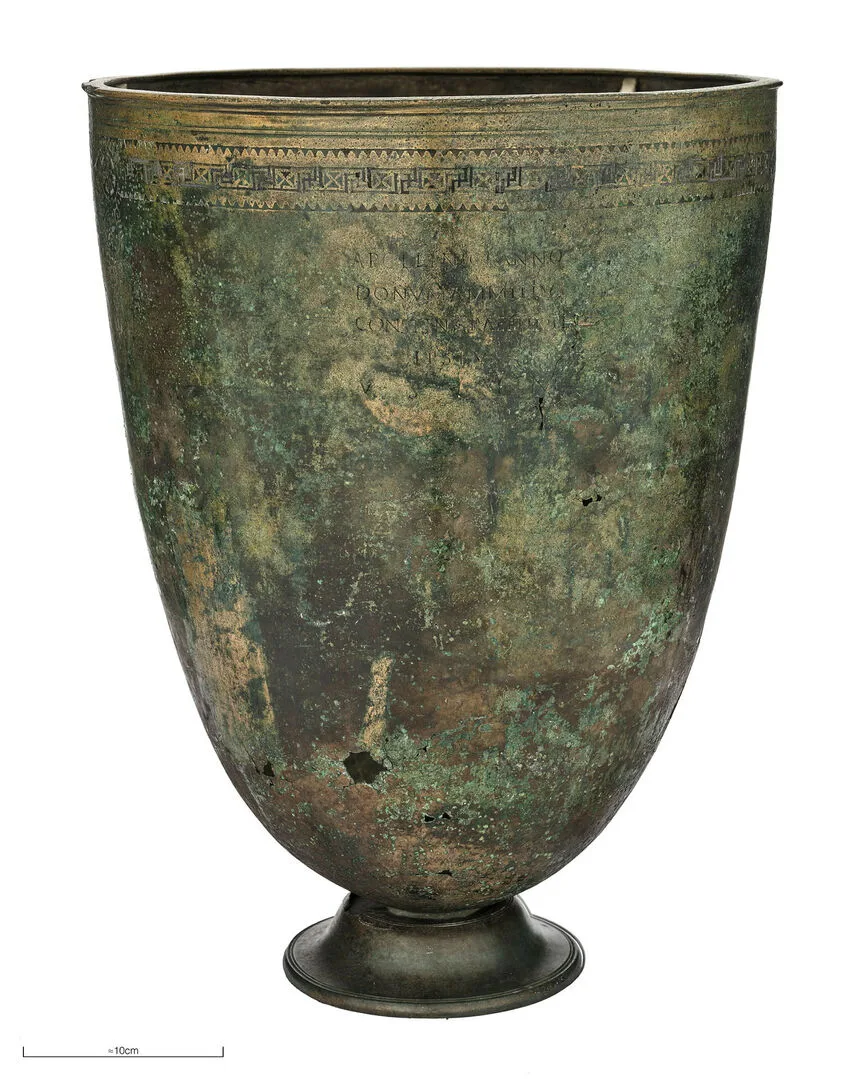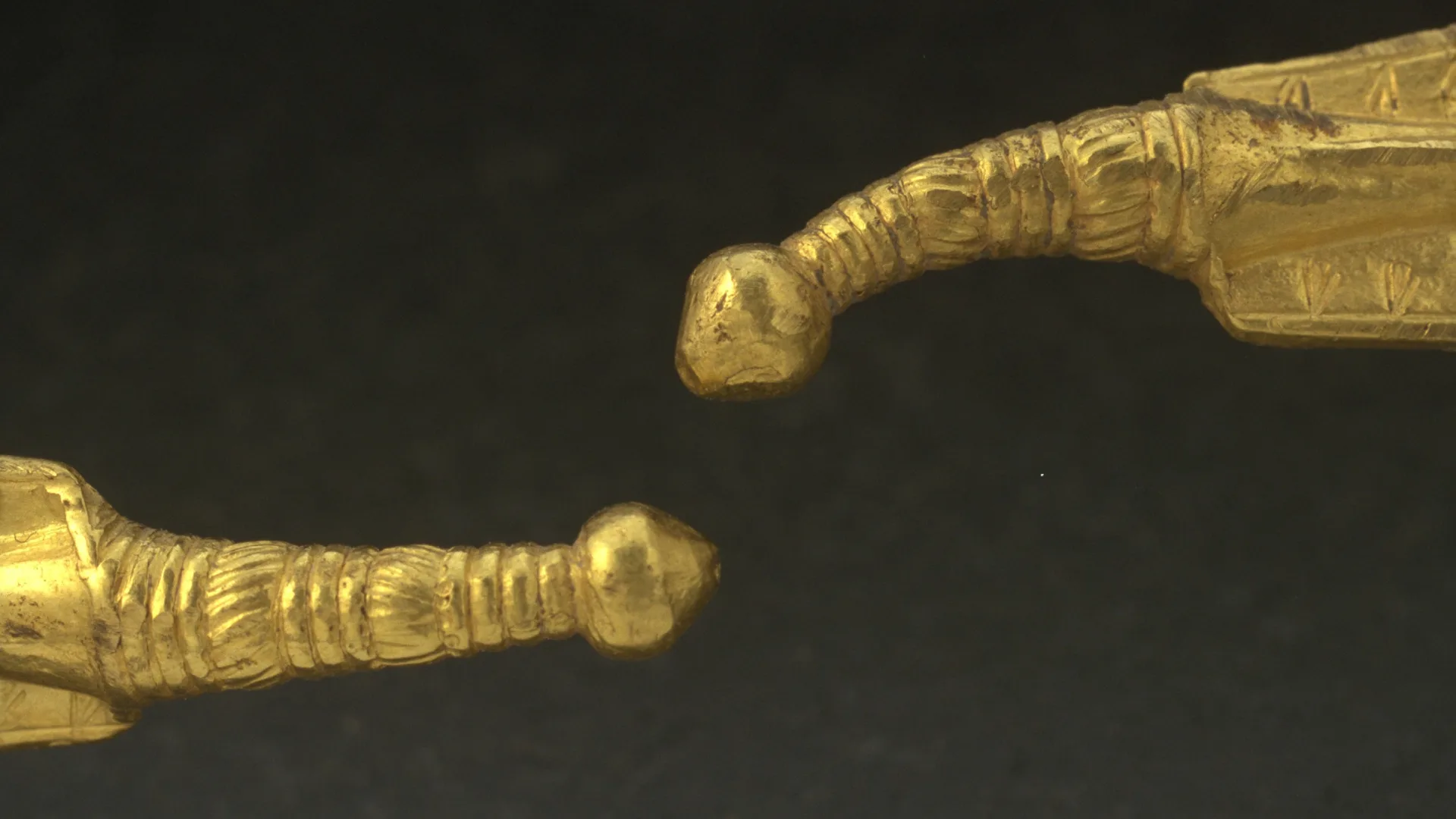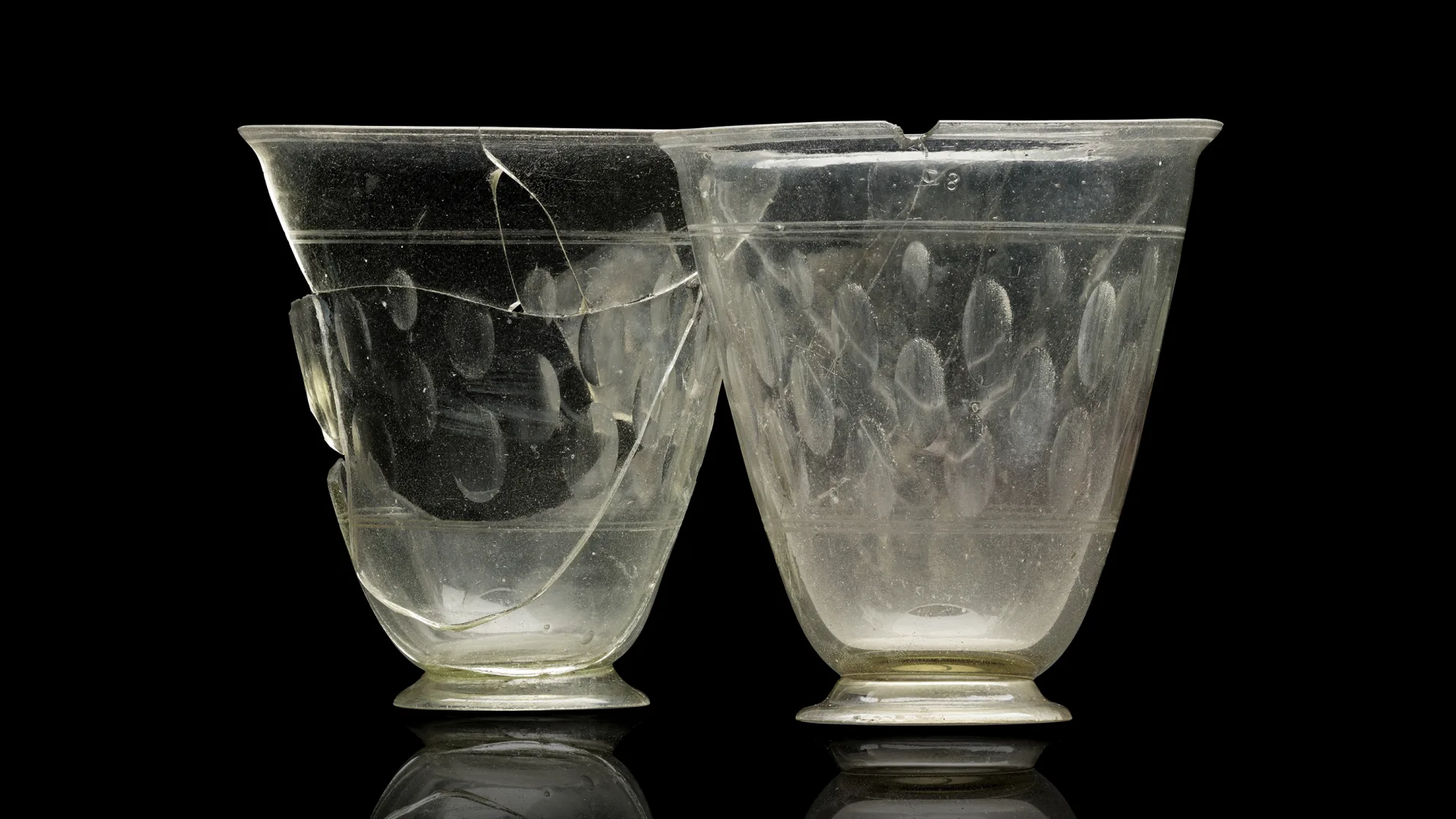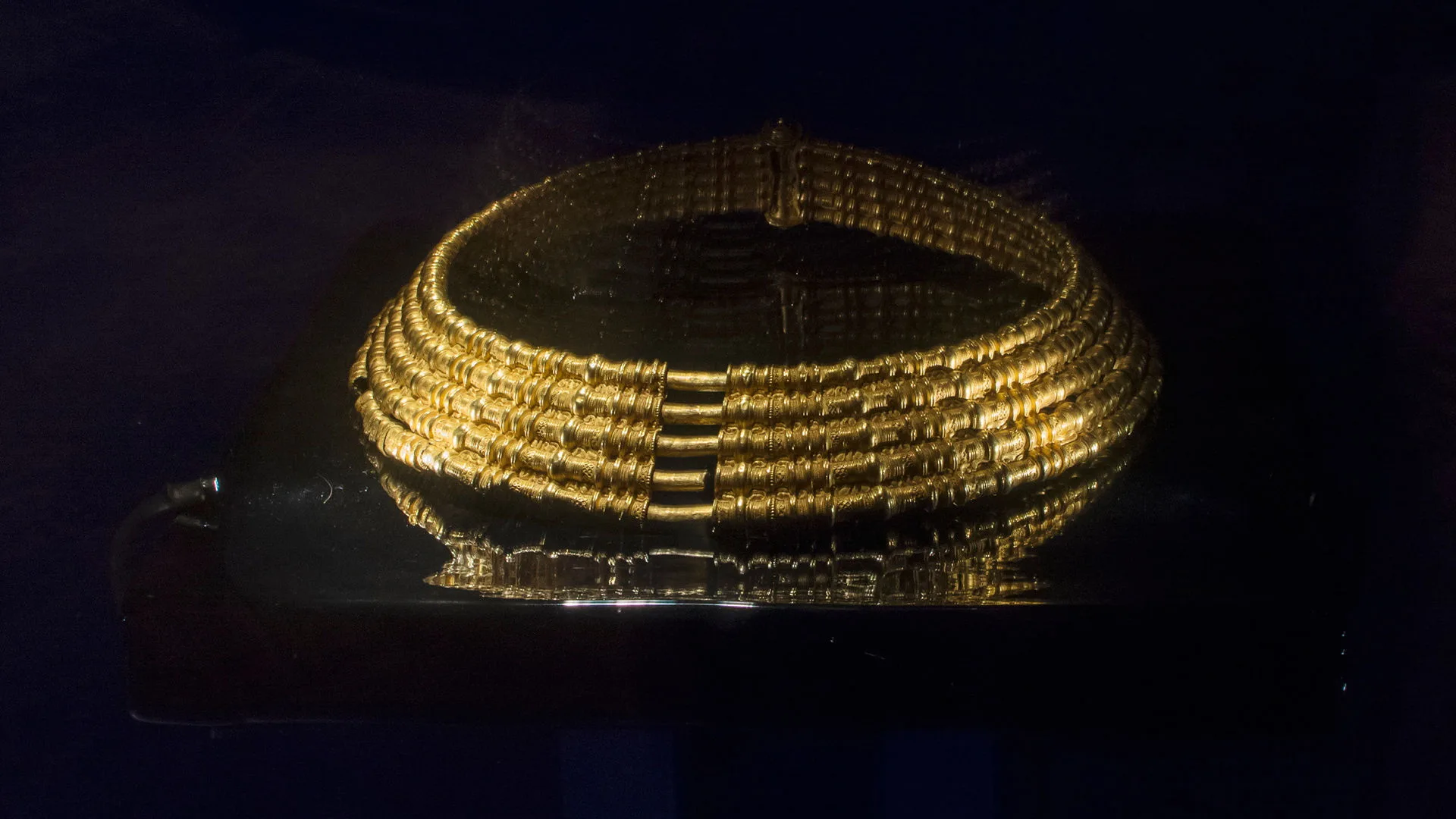Treasure from a Roman temple
Bronze Age
1700 BC – 500 BC
Iron Age
500 BC – AD 1100
Viking Age
AD 800 – AD 1100
Lundström realised he had discovered an ancient artefact and made sure the vessel was handed over to the antiquarian authorities. In recognition of his honesty, he received a letter from King Carl XIV Johan and a finder’s reward of 100 riksdaler, a considerable sum at the time.
A unique Roman artefact
The vase stands out from nearly all other Roman bronze vessels found beyond the borders of the Empire. Its shape is without parallel, but what truly makes it unique is the inscription:
“APOLLINI GRANNO DONVM AMMILIVS CONSTANS PRAEF TEMPLI IPSIVS VSLLM”
(“To Apollo Grannus, temple overseer Ammilius Constans gave this gift.”)
Only one other inscribed Roman bronze vessel has ever been found in Scandinavia, and that one survives only in fragments.
The Apollo Grannus vase, as it is known, must clearly have belonged to a temple and been part of a temple treasure. The deity in question was Apollo Grannus, a Roman-Celtic god of the sun and healing springs. A major sanctuary dedicated to Apollo Grannus was located in what is now Aachen in northwestern Germany, and it’s quite possible that the vase originally came from there.
Plundering northerners
The inscription makes it clear that the vase could not have been a regular trade item, unlike the majority of Roman bronze vessels found outside the Empire. Instead, it likely came to Västmanland as a result of more direct contact between northerners and Romans, possibly the spoils of a plundering raid deep into Roman territory.
The Apollo Grannus vase is a stark reminder that not all encounters between Romans and northern peoples were peaceful. Great wealth lay beyond the Roman frontier, wealth that could be seized through force.
Centuries before the Viking Age, Norse raiders were already launching successful expeditions down into the Continent and returning with plundered treasures that elevated their personal prestige. The burnt bones found inside the vase at the time of its discovery suggest it had been repurposed for the cremation burial of a powerful individual.






